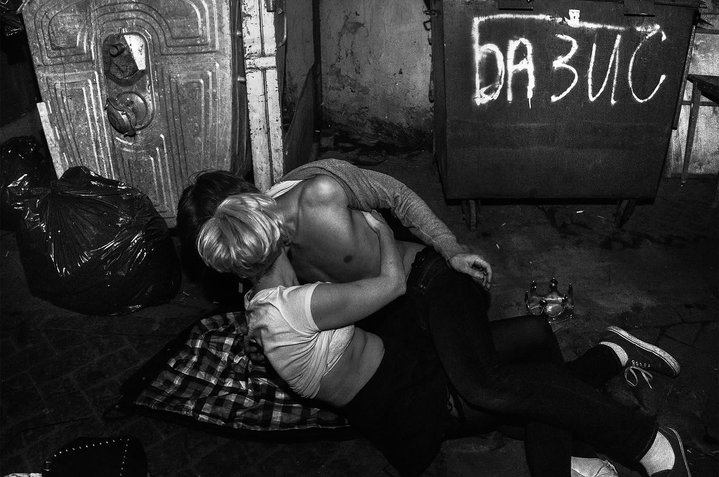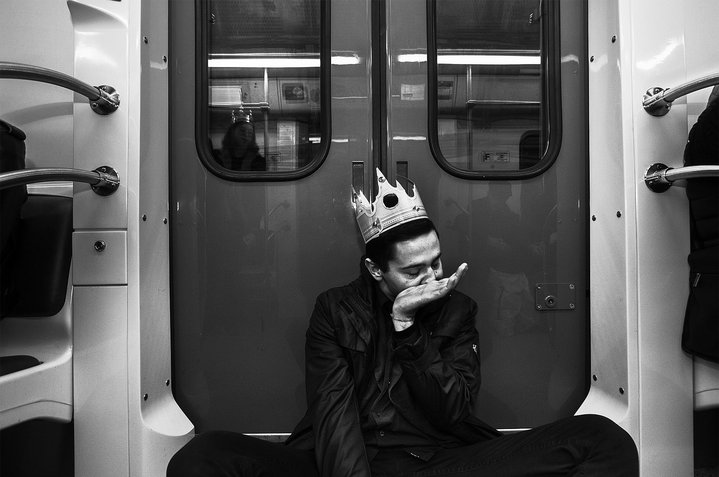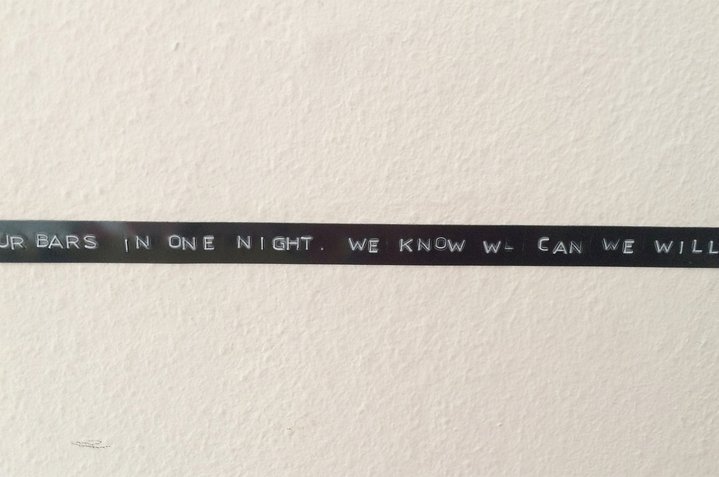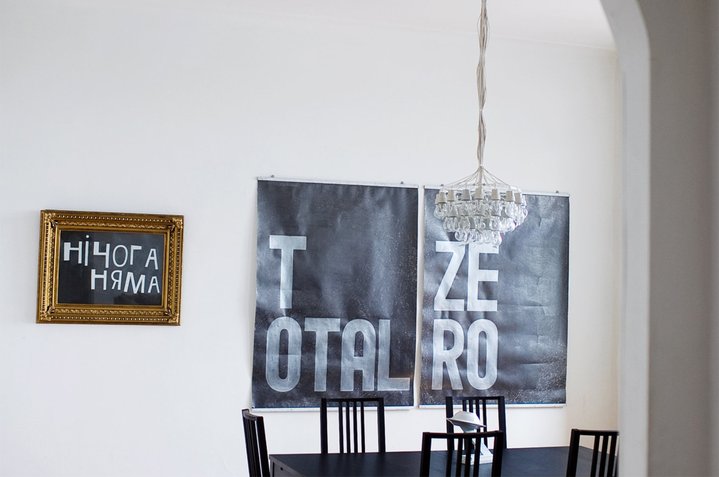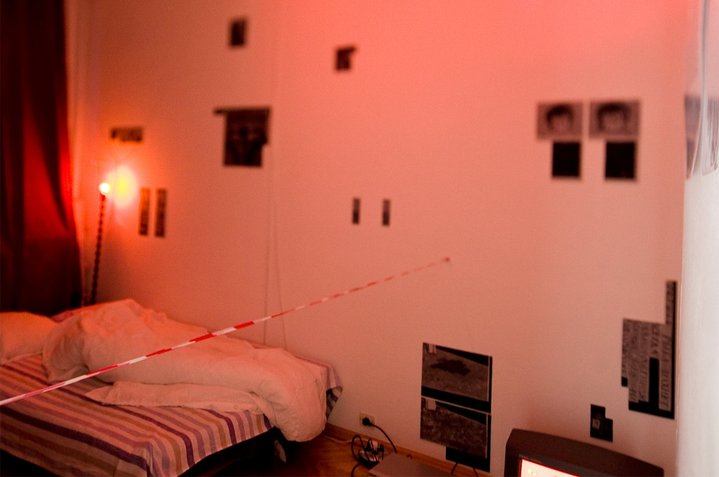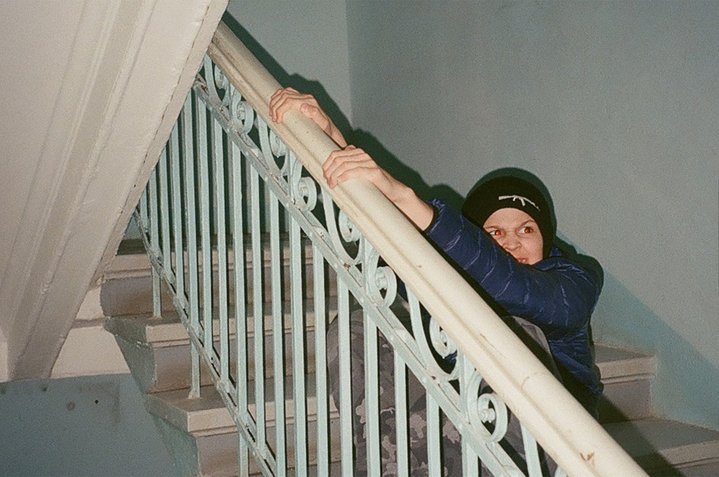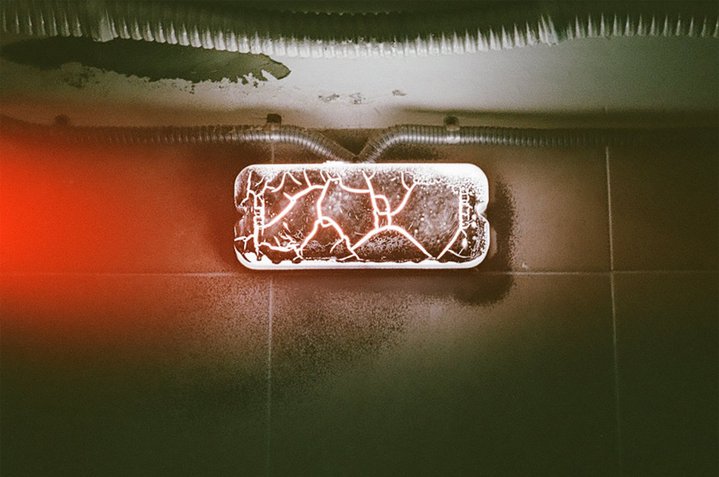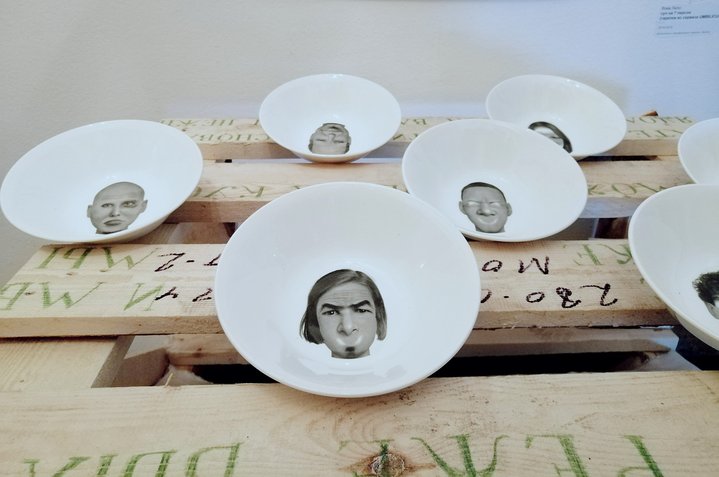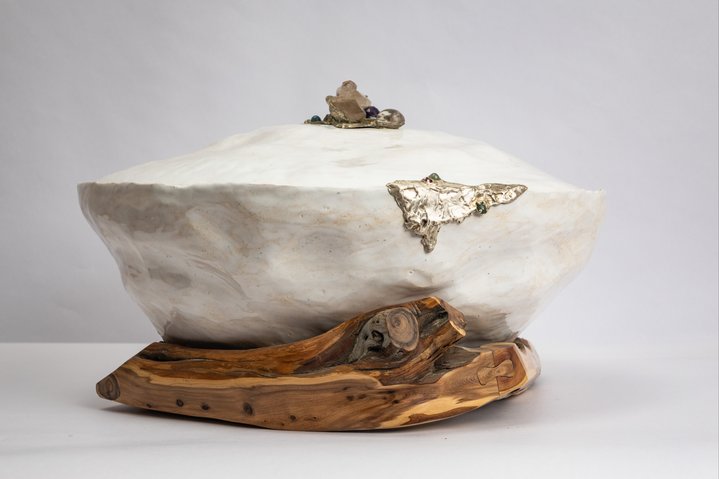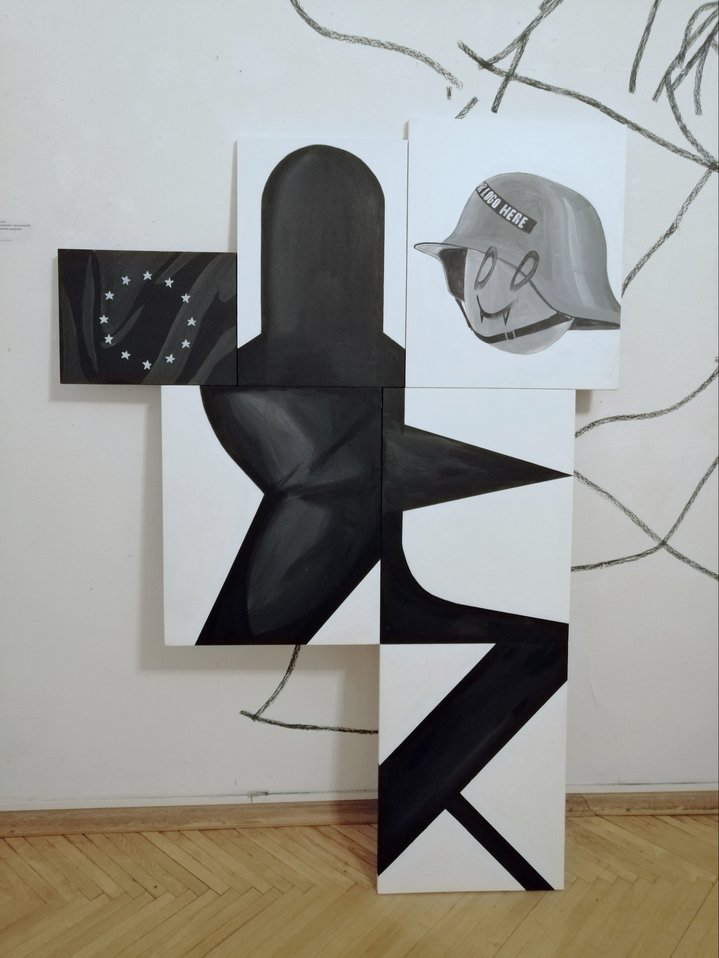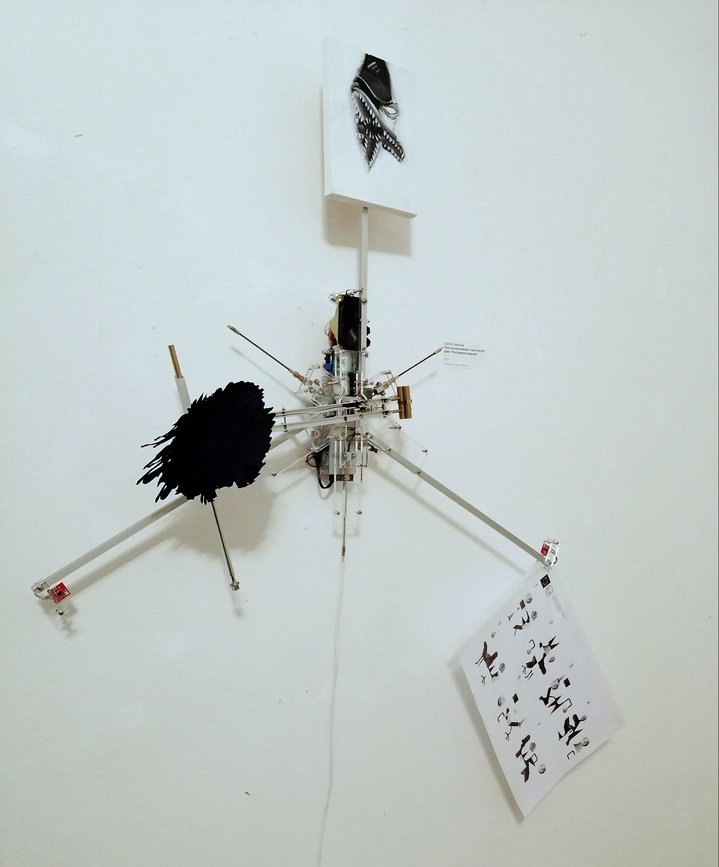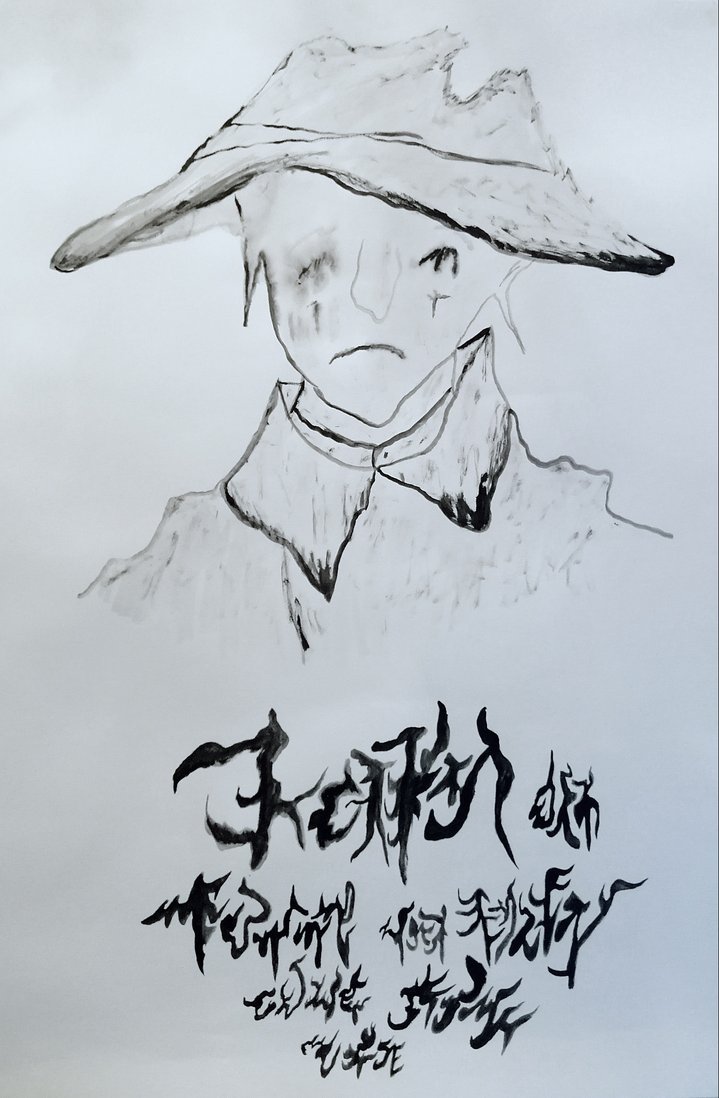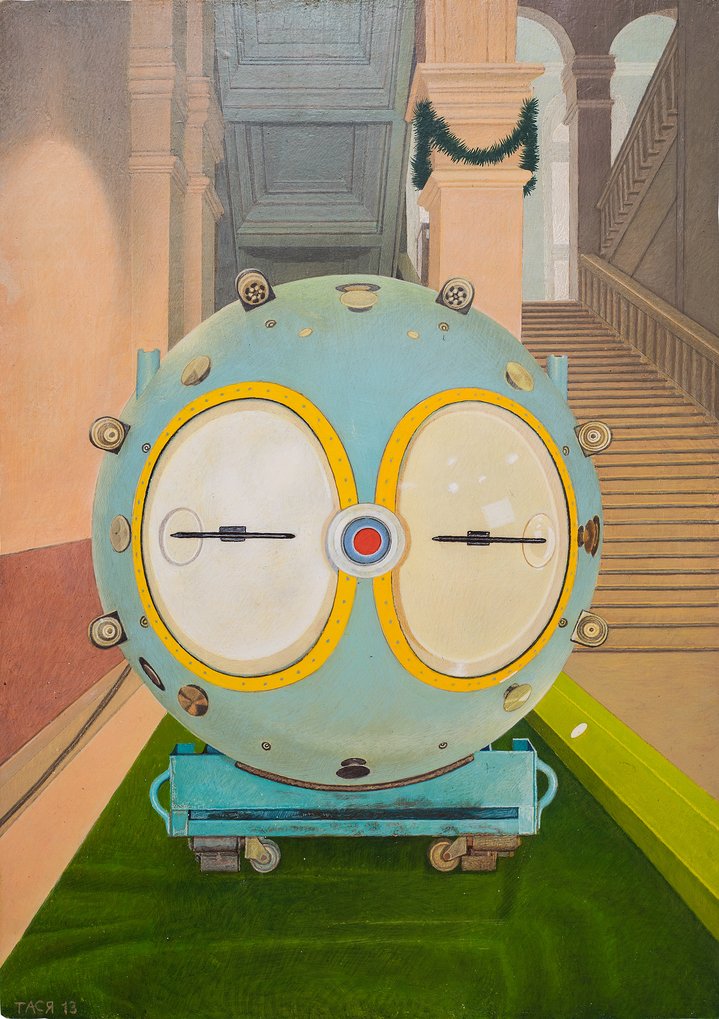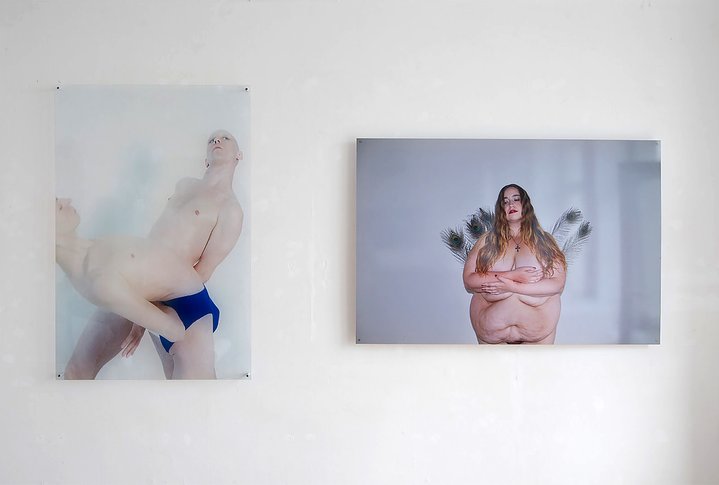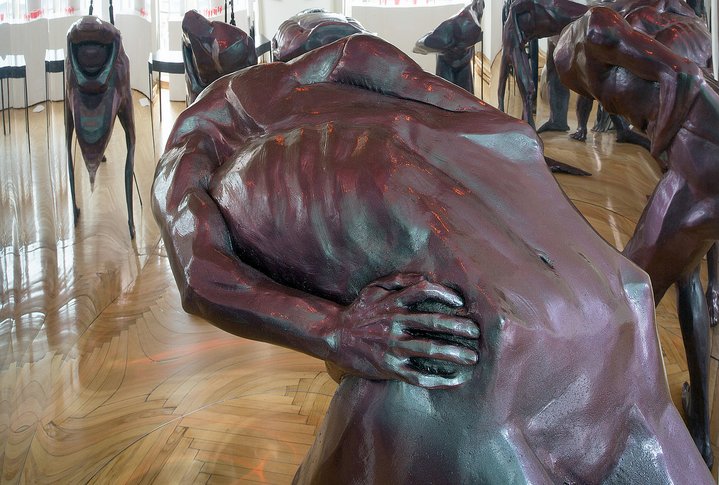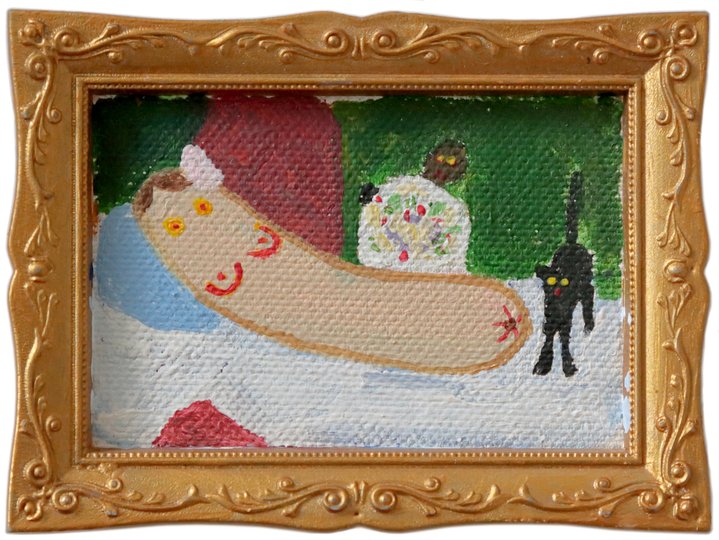Simon Mraz's collection and one-evening shows of young Russian artists

Simon Mraz at his office with a painting by Alexander Vilkin and Victoria Begalskaya. Photo by Ekaterina Wagner
An art historian, curator and director of the Austrian Cultural Forum in Moscow, Simon Mraz was so taken by Russian art that he turned his flat into a space for one-night pop-up exhibitions of local young talents.
The most impressive feature that one notices upon entering Simon Mraz’s flat is a breathtaking view of the Kremlin. The second is a chandelier made of broken lightbulbs. As an employee of the Austrian Embassy, Mraz is responsible for cultural relationships between the two countries, and he does not hesitate to bring his work home. The curious artifact on his living room ceiling is a remnant from one of his first home exhibitions, aptly titled “Facing the Kremlin. Nice Perspective.” Curated by famous Austrian artist and curator Peter Weibel and included as a special project of the 2011 Moscow Biennale, it featured artworks created by his compatriots.
The chandelier, assembled on-site by artist Eva Chytelik, proved impossible to remove. Mraz eventually bought it, promising her that it would remain in the flat as long as he stays there himself — which might mean, in his words, “hopefully still a bit of time.” Having studied history of art at university in Vienna and the Sorbonne, Mraz began his career at the old and respected Dorotheum auction house in Vienna, where he helped to create a Russian department. He came to Russia, a country that had fascinated him since his youth, in 2009 on a 10-month contract. Somehow, 10 months stretched into 10 years. “I came here with the mission to bring Austrian artists to Russia,” Simon reminisces. “It was a new challenge for me because before that, I was only working with artists having been dead for a long time.” Having settled in Moscow in a huge, grim-looking residential building opposite the Kremlin, constructed in the 1930s for the Soviet elite and known as the “House on the Embankment,” he began to explore the local art scene. He took every chance to attend exhibition openings in order to get to know artists and visit their studios.
The first ones he happened to meet were the Conceptual artist couple of Igor Makarevich and Yelena Yelagina. “I hardly understood anything because I did not speak Russian at the time,” he confesses. “But I still remember how nice and friendly they were to me.” Mraz started off by organizing group exhibitions where Austrian and Russian artists participated on equal footing. Some of them opened in major museums, such as the Moscow Museum of Modern Art or the Schusev Museum of Architecture, but the ones he is most proud of were staged in godforsaken places where hardly any art critics dared to tread. In 2013, he curated a show, together with Stella Rollig (then-director of the Lentos Kunstmuseum in Linz, Austria), called “Lenin: The Icebreaker” on a real icebreaker named after Lenin, which was docked at the northern Russian Navy port of Murmansk. (The exhibition travelled to the Lentos Kunstmuseum the following year.)
In 2016, another show opened in a working observatory in Nizhny Arhyz, in the Caucasus mountains. One might wonder about the purpose of showing art at a place where nobody can see it. Simon has reasons of his own and they are far from mere touristic curiosity. “Russia has a lot of places that are incredibly strong sources of inspiration,” he believes, and sees his mission as bringing artists there. According to Mraz, the world cannot be described only in terms of statistics or geography. “The reality is bigger than that. Art is a very appropriate medium to face reality.” Indeed, it is probably easier for an artist or a foreigner to find inspiration in the realities of Russian provincial life, which locals are more likely to find depressing.
“Russia is a place that matters not only because of its creativity, but also because of its untold stories — which are not just regional and exotic, but also interesting to any artist, any human being,” Mraz says. It was probably his insatiable appetite for these stories that made him turn his flat into a Bohemian hotspot. Unlike its French or Spanish equivalents, the Austrian Cultural Forum in Moscow has no exhibition space of its own. “Even if I had that space, it would be difficult to exhibit Russian artists there,” he explains. Another motive was more personal: “I live alone, so I wanted to share my life with something. Now I share it with art. When you see it in the intimate environment of a flat, it’s very different from perceiving it in a museum or gallery.” Indeed, these events feel more like private parties than tight-laced gallery openings.
Music plays loudly and pasta is dispensed from a cauldron almost half the size of Simon’s tiny bachelor’s kitchen. Half of the Moscow’s art scene passes through the flat in the course of one evening. Friends and strangers come and go without ceremony, since the host describes his invitation policy as “random.” He hands out invitations to whoever he meets in the course of doing business or his social life, and participating artists bring along friends of their own. Though the ambiance may be casual, the host’s meticulous attention to details belies serious curatorial ambitions. Thoughtfully designed invitations are sent out. A curator’s text is always hanging at the door and a professional photo shoot of every exhibition is posted on the website for those who missed the fun. Each show lasts only for one evening. For Mraz, it is a part of the game. “There are a lot of things and information that are always available,” he remarks, “so it is a good exercise when some things are made accessible only for a very limited time.”
The artists who participate in the exhibitions are primarily young and their art is often radical: from violent black-and-white paintings by Alisa Yoffe to colourful furry objects by the Elikuka art duo who turned the whole space, including the host’s bedroom, into a hilarious total installation. The shows are always strictly non-profit, as Mraz never ceases to emphasize, although Moscow’s collectors looking for new talents never miss his artsy parties. Mraz himself shuns the word “collector,” insisting his random purchases have no hidden strategy behind them. Outraged by the disparaging comments made by an oligarch about Russian contemporary art, he wrote to a friend to state his passion for it and the lengths he goes to in order to buy it. This is how he voiced his views: “I have chosen to have old pullovers and wear worn-out suits so as to surround myself with Russian contemporary art because I believe Russia is one of the most important and fascinating places of artistic creation in the world.”
Yet he often yields to temptation in order to buy the artworks he loves. Some of them, such as an enormous painting by Alexander Vilkin and Victoria Begalskaya, or brightly-coloured still-lifes by David Ter-Oganyan, adorn his office at the embassy, while most, including an installation by the Recycle group, Taisia Korotkova’s paintings and Andrey Kuzkin’s sculptures, are kept at his Austrian home. Mraz prefers to save space at his Moscow flat for future pop-up exhibitions. In 2019, he plans to display only works of artists from outside Moscow, a pointed reminder to the art-savvy Muscovites flocking to his short-lived shows that there’s still much to discover beyond the confines of Russia’s capital.
The Boom Rooms






